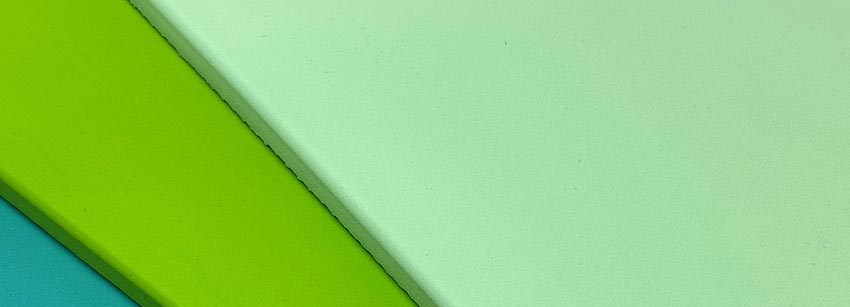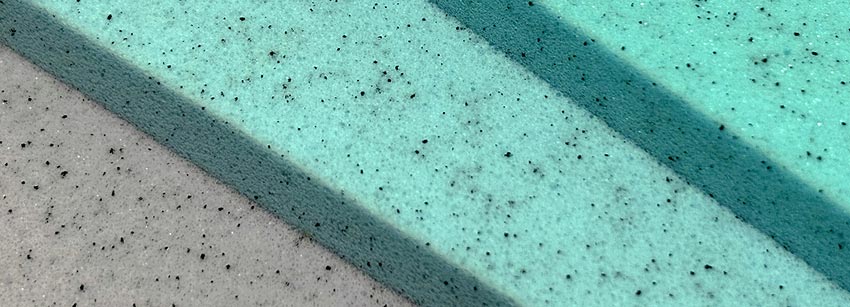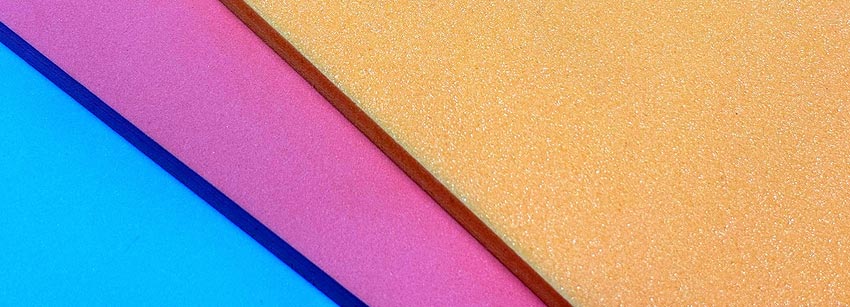Why Footwear Brands Are Investing in the Insole Experience
Footwear should be experienced – and footwear experience design trends include a thoughtful insole selection to ensure comfort, performance, and support.

Whether selecting a casual shoe, dress sneaker for the office, or nursing and service footwear for long hours standing, your customers expect their walking shoe will be comfortable, offer stability, and be durable. Insoles play no small role in how your customer feels in your shoe, and in this first post of our “Foams Matter” series, we’ll explore the best foam options for walking shoe insoles that will deliver on your customers’ expectations.
Traditionally, insoles have served as a simple barrier between the foot and the midsole or outsole of the shoe. But the comfort, performance, and support of the insole are paramount – hard or thin insoles that provide no shock absorption or foot support can quickly cause pain and discomfort during any activity.
Insole foams serve some important functions for foot health and overall comfort:
Reduces impact forces as your foot strikes the ground.
Provides softness to minimize foot fatigue during extended walks.
Offers the necessary stability for the heel and arch, which is crucial for maintaining proper gait.

In some foam formulations, enhanced breathability works with the overall shoe design to help keep feet dry and comfortable.
The best foam selection for an insole depends on the type of footwear – for walking shoes, customers are looking for comfort, support, durability, and breathability.

PU foam works best in footwear designed for extended use, such as work boots or athletic shoes, or for individuals who require extra stability. Key characteristics include:
Read More: Maximizing Comfort While Prioritizing Bio Content in Recovery Shoes

Open cell PU foam is best suited for insoles that must strike a balance between cushioning and lightweight density. Open cell PU foam can be adapted to shape similar to closed cell PU foam, but it’s generally less supportive because of the low density and greater aeration in the foaming process. For example, we generally won’t use open cell in anything but die-cut or low profile shapes like ArchRelief.
Like poured or closed cell PU, it is a highly adaptable and flexible foam, and it can be compression molded to shapes with low- to mid-level arch support. Key characteristics include:

EVA foam is typically used in midsole and insole applications where it is necessary to balance cushioning and energy return. However, EVA foam can compress over time, making it a less-than-ideal choice for support of high-stress areas, such as the heel. Key characteristics include:
As discussed, insole foams offer many properties outside of general cushioning, and everything from the foam construction to how it’s used has an impact on foot health.
Walking shoe insoles should be designed for stability and comfort with the heel and arch in mind. Poor insoles can trigger pain in the arch and heel during longer walks or extended periods of standing. The right foam not only delivers comfort, but can result in a healthier walking gait.
Here are a few foam considerations that promote heel design and arch support in walking shoe insoles:
Cushioning & Shock Absorption: The heel endures the brunt of impact with each step. Using a denser foam like poured PU in the heel area provides the necessary shock absorption and durability.
Heel Cup Integration: A well-designed heel cup, often made with denser foam, can cradle the heel to maintain alignment and reduce slippage.


Customized Contouring: Arch support is vital for ensuring proper foot biomechanics. Poured PU or EVA offer the most support that contours to the unique shape of the arch. Open cell PU foam can also offer arch contouring, although as a low density option, it is best used for low arch profiles.
Balancing Flexibility and Support: While a soft foam can conform to the foot, it’s essential that the arch area maintains enough firmness to provide structural support throughout the day.
No single foam type is perfect for every application – as you have seen, poured PU, open cell PU, and EVA have some similar properties that can satisfy different types of footwear.
As a result, footwear brands have been exploring multi-component insole designs that combine the strengths of different foams to deliver targeted support and cushioning.
Footwear designers and developers can achieve two notable outcomes in this way:
Layered: Insoles can use a layered or dual density construction to offer two foam benefits as one. For instance, a bottom layer of poured PU offers durable shape support, while a top layer of open cell PU provides soft, breathable cushioning directly underfoot.
Zonal:Segmenting the insole into different “zones” that each use a tailored foam type that supports different parts of the foot the way they need to be supported, addressing both impact absorption and comfort. For example, an athletic insole could use EVA pads in the heel and forefoot for enhanced rebound and energy return, with a contoured open cell or poured PU pad in the arch to help disperse underfoot pressure.
This multi-foam strategy can be especially beneficial in walking shoes, where prolonged use demands both resilience and adaptability.
Our recommendation to footwear brands is to use either an open cell or poured PU foam for their walking shoe insoles. You’ll want a foam with a medium hardness that has some cushion to it but still provides some support, and that also has a low density for a lighter weight.
Traditionally, open cell PUs have these characteristics, but the INSITE Levation Bio25 Light poured PU foam offers low density cushioning with the extra durability of a poured PU for longer-lasting comfort.

Insole foams aren’t just for comfort – the choice should be strategic to enhance the overall performance and longevity of walking shoes. Here’s why getting it right matters for consumers and for your footwear brand:
With the right foam for your walking shoe insoles, your brand enjoys satisfied customers, lower return rates, and a stronger market reputation.
As you consider the best foam for what’s next in your footwear product development cycle, remember foam types for any shoe must balance comfort, performance, and support.
Stay tuned for more insights in our “Foams Matter” series, where we’ll continue exploring the best foams for different types of footwear.
Ready to redefine gravity for your footwear customers? Request a tech pack from INSITE today, and we’ll send you samples of INSITE’s latest foam innovations.
Footwear should be experienced – and footwear experience design trends include a thoughtful insole selection to ensure comfort, performance, and support.
How do you strike a balance between sustainability and performance when it comes to footwear materials? INSITE® Director of Research & Design Justin Ter Har recently answered this question at the FDRA Sustainability & Innovation Summit in Portland, OR in September.
Orthotics have many benefits, and orthotic-inspired insoles allow footwear brands to deliver those benefits right out of the box.